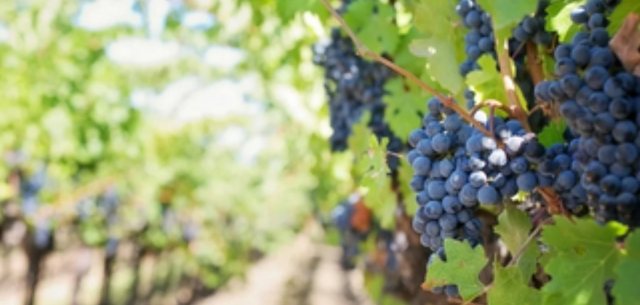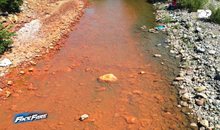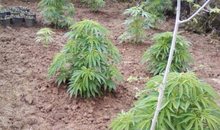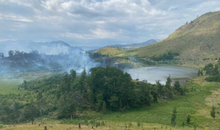
 Flash News
Flash News
Directors targeted! After Fier and Durrës, Rama arrives in Elbasan
Name/Identification of the 23-year-old found dead near Shkopet Lake
IKM action in Theth, residents come out in protest
Reported missing by his father, 23-year-old found dead near Shkopet lake
Drowned while rescuing two tourists in Shkodra, search continues for the body of the captain of the tourist ship
From vineyards to glass: How climate change is transforming the taste of Albanian wine

Climate change is becoming a serious threat to the wine industry, negatively affecting the production of high-quality wines in many regions of the country. Specialists in the sector are concerned: vineyards are suffering from a significant drop in yield, while wines are gradually losing their characteristic aromas that make them unique. This phenomenon is threatening not only production but also the identity of Albanian wines.
Climate change in Albania and Europe is significantly affecting the physiological cycles of plants, especially the flowering process, which is increasingly accelerated. This is due to the increase in winter temperatures and higher overall averages over the last 5 years.
Climate change is expected to reduce the land suitable for viticulture in Europe by 25% to 73% by 2050. The Mediterranean region is expected to suffer a loss of 68% of suitable viticulture areas, with water stress increasing by up to 50%, while Southern Europe will become increasingly dependent on the expansion of vineyards into new lands, with a slow decline in productivity and quality in traditional wine-producing regions.
According to Dr. Roberto Puglisi, the maximum temperatures recorded before the harvest cause very high levels of stress to the plant. This stress is also exacerbated by the uneven distribution of precipitation, with longer intervals between them and extreme phenomena.
Especially temperatures above 40 degrees Celsius in August cause high stress that leads to interruption or reduction of photosynthetic activity and negatively affects the vegetative and productive aspects.
Also, problems arise in the nutritional aspect of plants. Since plants obtain nutrients from the soil's circulation cycles, the state of water stress directly affects the quantity and quality of production. This causes alterations in quality parameters, including premature consumption of organic acids before the fruit and grape ripening phase, which then affects the oenological activity. Climate changes, which, as confirmed by all those working in the agricultural sector, have caused in addition to physiological transformations, other effects that are always common, influenced by extreme phenomena.
"Long periods of heavy rainfall or prolonged drought intervals also appear in alterations of pathogens with more serious signs. These manifestations are of the type of attack by common pathogens but with higher virulence. In plant organisms already stressed by extreme phenomena such as high temperatures, lack of water or heavy rainfall, the attack by pathogens such as fungi, viruses and bacteria, which have a greater tolerance to climatic fluctuations compared to cultivated species, causes irreversible damage. Due to frequent rain, in some cases farmers have to apply an excessive number of pesticide sprays. This results in higher costs, but also more waste (food safety problems) and lower quality of grapes (and wine) in general," says Dr. Roberto Puglisi, agronomist, for "Klima Sot".
Species such as downy mildew, mold, and insect attacks that take advantage of the fragility of plants weakened by extreme climatic phenomena have been observed more frequently. These infections pose a serious risk to agricultural crops, adding to the difficulty for farmers who must face not only climatic anomalies but also the increased phytosanitary problems that result from them.
Drought and high temperatures over the past two years have significantly affected the cultivation of vineyards in Albania, forcing many wineries to harvest the fruit earlier than usual. This has come as a result of reaching the sugar percentage level in the grapes in a period of about 15 days earlier than usual, with the harvests starting around the last 10 days of August. From a technological point of view of the sugar level, the grapes had reached the necessary maturity, which was not fully reflected in the ideal woodiness of the core, which is reflected in higher levels of tannins.
Latest news



Directors targeted! After Fier and Durrës, Rama arrives in Elbasan
2025-07-09 09:53:57
Name/Identification of the 23-year-old found dead near Shkopet Lake
2025-07-09 09:42:34
IKM action in Theth, residents come out in protest
2025-07-09 09:34:54
Reasons why the EU has not imposed new sanctions against Russia
2025-07-09 09:18:35
DW: Online scams increase human trafficking
2025-07-09 09:01:29

Reported missing by his father, 23-year-old found dead near Shkopet lake
2025-07-09 08:42:13

Horoscope, what do the stars have in store for you today?
2025-07-09 08:25:44
Sun and rain, Wednesday with unstable weather
2025-07-09 08:06:58
Posta e mëngjesit/ Me 2 rreshta: Çfarë pati rëndësi dje në Shqipëri
2025-07-09 07:52:02

Tabaku: Salianji bore a political cost that no one in Albania has borne
2025-07-08 22:36:15


Sekretet për të shijuar verën si një ‘profesionist’
2025-07-08 21:45:06


Albania's Waste Crisis: Toxic Smoke and Deep Governance Problems
2025-07-08 21:13:07
Alarming pollution in Fushë-Arrëz, copper factory waste turns the Fan River red
2025-07-08 21:07:14

Poll/ How do you assess the Prime Minister's intervention in local government?
2025-07-08 20:40:01
28 arrested in Italy and Spain for drug trafficking, including an Albanian
2025-07-08 20:24:14
Residents clash with police in Theth: We are on our land
2025-07-08 20:11:41
Death of 27-year-old in Lipjan, Osmani: To be investigated independently!
2025-07-08 20:06:52
Trump promises US will send more weapons to Ukraine
2025-07-08 19:54:25

EU targets health, education, police and cadastre as areas of corruption
2025-07-08 19:23:34




Salianji after his return: I did not oppose for functions, but for vocation
2025-07-08 18:23:15
Will he run in the 2029 elections? Here's how Salianji answers
2025-07-08 18:16:09
Boat captain drowns after diving into water to save two tourists in Shkodra
2025-07-08 18:05:12
Salianji from the DP headquarters: I brought a drug trafficker to justice
2025-07-08 18:03:26
After Fier, Rama "landes" in Durrës, dismissals expected
2025-07-08 17:53:32
Ervin Salianji arrives at the blue headquarters, welcomed by supporters
2025-07-08 17:45:12

EU approves final steps for Bulgaria's Eurozone membership
2025-07-08 17:43:06

Zhupa after Salianj's release: Inspiration for every opposition member
2025-07-08 17:19:39
Actor David Killick passes away
2025-07-08 17:09:23



Threatened with dismissals, Rama arrives at the Fier municipality
2025-07-08 16:39:19
Extreme temperatures temporarily close Acropolis in Greece
2025-07-08 16:30:34

A plot of cannabis is discovered in Mazha, Kruja
2025-07-08 16:13:48

Republika Srpska allocates additional 22 million euros for lobbying in the US
2025-07-08 15:52:04

Spices that protect you from mosquitoes!
2025-07-08 15:30:03

Accident on the Vlora-Qeparo axis, one injured
2025-07-08 15:11:52
Berat, 17 years part of UNESCO's world heritage
2025-07-08 15:03:30


Cost of living increases, inflation rises to 2.4% in June, driven by food
2025-07-08 14:29:54
VIDEO/ Restaurant roof collapses in Italy, one victim and ten injured
2025-07-08 14:18:44
Requested release from cell, Supreme Court leaves Veliaj in prison
2025-07-08 14:07:41
TikTok shutdown/ Austrian media: Rama benefited politically from the app ban
2025-07-08 13:48:25
Acropolis temporarily closed due to heat
2025-07-08 13:31:09



Salianj's release/Berisha: He was politically condemned by Rama and Xhafa!
2025-07-08 13:00:13

Knife attack on Peshkopia Boulevard
2025-07-08 12:44:10


Fier Court decides on the conditional release of Ervin Salianj
2025-07-08 12:15:23
Cost of living increases, inflation rises to 2.4% in June due to food
2025-07-08 12:00:16


Requesting conditional release, Ervin Salianji arrives at the Fier Court
2025-07-08 11:16:36
The first phase of university applications begins today
2025-07-08 11:10:52
Fire in Lura, flames endanger the National Park
2025-07-08 10:53:43
Trump warns of 35% tariffs on Serbia and 30% on Bosnia and Herzegovina
2025-07-08 10:37:32
Thethi rooster and the dung cock
2025-07-08 10:24:01

Fire in Dukat endangers Llogara National Park
2025-07-08 10:01:39
International drug search: 36-year-old arrested in Durrës (NAME)
2025-07-08 09:50:48
Thethi, tourists "criticize" modern trend
2025-07-08 09:39:54
Fire on Mount Dukat still active, Llogara National Park at risk
2025-07-08 09:28:12
Veliaj's appeal to be heard today in the High Court
2025-07-08 09:16:02
"Bad sign for democracy"/ Parliament neglects reporting by institutions
2025-07-08 09:04:56
Today's hearing at the Fier Court, Salianji requests conditional release
2025-07-08 08:56:39


Horoscope, what do the stars have in store for you today?
2025-07-08 08:16:19
Weather forecast/ How temperatures will vary throughout the day
2025-07-08 08:02:37
Morning Post/ In 2 lines: What mattered yesterday in Albania
2025-07-08 07:48:30



